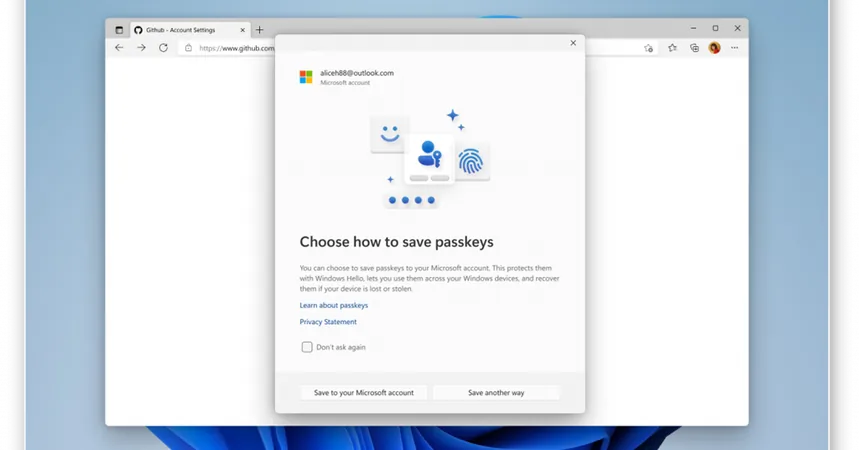
Breakthrough Study: Graded Oral Challenges for Pediatric Macrolide Allergy Prove Safe and Effective!
2024-10-11
Author: Benjamin
Why This Study Matters
Macrolides are a common class of antibiotics, making up approximately 30% of all oral antibiotic prescriptions. They are frequently prescribed as alternatives to β-lactams for patients with known allergies. However, many pediatric patients who report adverse reactions are never referred to allergy specialists, resulting in a lifelong avoidance of these critical medications.
“The challenge lies in the absence of standardized skin testing for diagnosing macrolide allergies,” Sillcox noted. “Our study was aimed at evaluating the safety and efficacy of direct GOCs as the primary confirmation method for suspected allergies.”
Research Methodology and Findings
Over an extensive period from November 2012 to November 2023, Sillcox and the investigative team collected data from allergy clinics at Montréal Children's Hospital and Janeway Children's Health and Rehabilitation Centre in Newfoundland and Labrador. The study focused on pediatric patients aged 18 or younger suspected of having macrolide allergies.
Using a two-step, non-blinded GOC procedure, the team administered a 10% dose of the suspected macrolide, followed by a 90% dose after a waiting period of 20 minutes. Importantly, the participants were monitored for one hour, and those without symptoms were considered tolerant. Patients who exhibited symptoms were classified as ‘immediate reactors’ and received appropriate treatment.
Researchers gathered comprehensive data including demographics, clinical details, and the management of documented allergic reactions via a standardized questionnaire. Statistical analysis through multivariate logistic regression was utilized to identify factors associated with positive GOC outcomes.
Key Findings Revealed
Among the 112 participants identified with macrolide allergies, 58.9% were male, while 41.1% were female, with a median age of 5.5 years. Clarithromycin was the primary antibiotic involved in 72.3% of cases, while 27.7% reported reactions to azithromycin.
Remarkably, 90.2% of the participants tolerated the GOC, with an immediate reaction seen in 8.0% and a non-immediate reaction in 1.8%. Except for one child who suffered anaphylaxis and was successfully treated, all other reactions were limited to mild skin rashes without mucosal involvement, demonstrating the overall safety of GOCs.
Interestingly, the researchers noted a higher likelihood of positive GOC results in children older than 12 (adjusted odds ratio: 1.43) and those with a history of other antibiotic allergies (adjusted odds ratio: 1.22). Conversely, individuals with known food allergy comorbidities had lower chances of positive GOC results (adjusted odds ratio: 0.84).
The Future of Pediatric Allergy Management
As the research concluded, a follow-up in January 2024 indicated that 17.4% of those with negative GOC results had successfully used the culprit macrolide without reporting adverse reactions. While the study acknowledged potential recall bias due to the retrospective method of documenting prior reactions, the timeframe of less than a year between index reactions and recruitment limits the risk of inaccuracies.
This study brings hope not just for pediatric patients but also underscores the need for further research, particularly in adult populations, to fully understand the implications of macrolide allergies and the benefit of GOCs. This could potentially reshape antibiotic prescribing practices and improve quality of life for countless patients.
Stay tuned as this story develops, and let’s hope for a future where no child has to fear going without essential medicines!









 Brasil (PT)
Brasil (PT)
 Canada (EN)
Canada (EN)
 Chile (ES)
Chile (ES)
 España (ES)
España (ES)
 France (FR)
France (FR)
 Hong Kong (EN)
Hong Kong (EN)
 Italia (IT)
Italia (IT)
 日本 (JA)
日本 (JA)
 Magyarország (HU)
Magyarország (HU)
 Norge (NO)
Norge (NO)
 Polska (PL)
Polska (PL)
 Schweiz (DE)
Schweiz (DE)
 Singapore (EN)
Singapore (EN)
 Sverige (SV)
Sverige (SV)
 Suomi (FI)
Suomi (FI)
 Türkiye (TR)
Türkiye (TR)